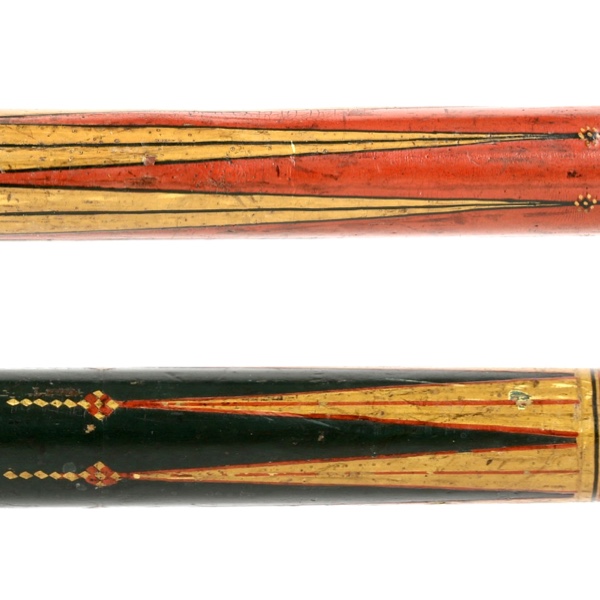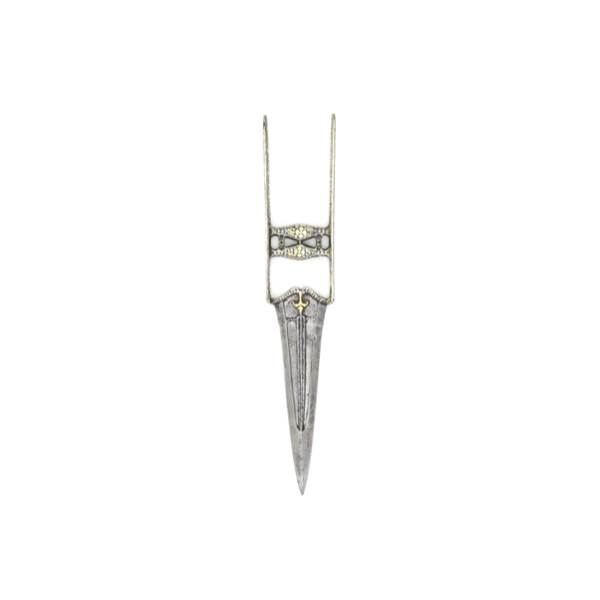
Rajput child katar
With ganga - jamni gold koftgari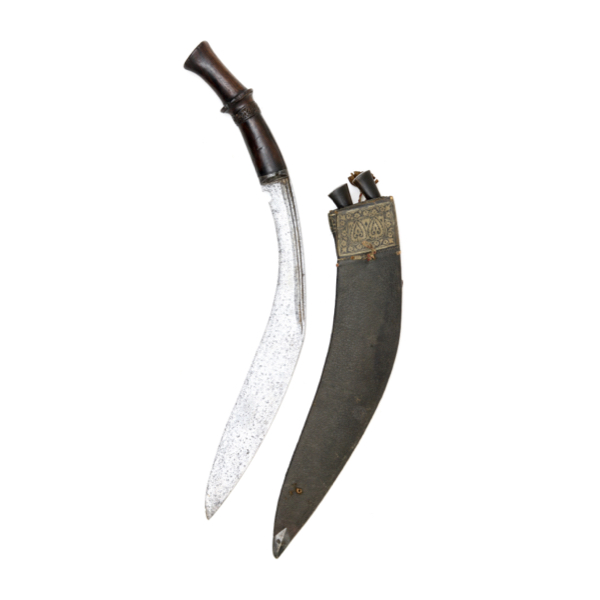
A fine hanshee
Early type with very shallow notch in the blade and little flare in the pommel.
Very rare early kora
Complete with goatskin-covered scabbard with fine quill embroidery.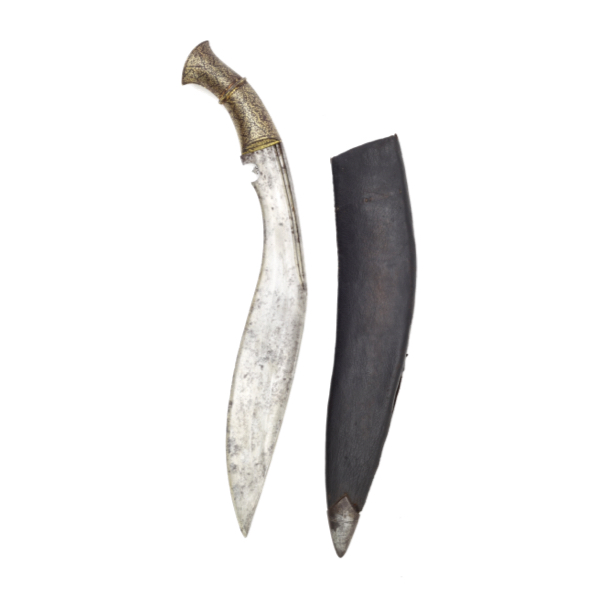
Koftgari hilted khukurī
Impressive piece, with Indian-made iron hilt with gold overlay.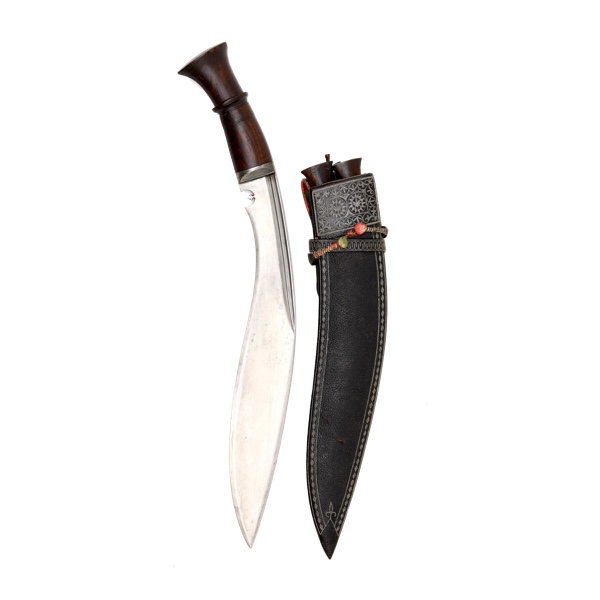
A fine mid 19th century khukurī
An understated, elegant khukuri of substantial proportions with fine layered blade.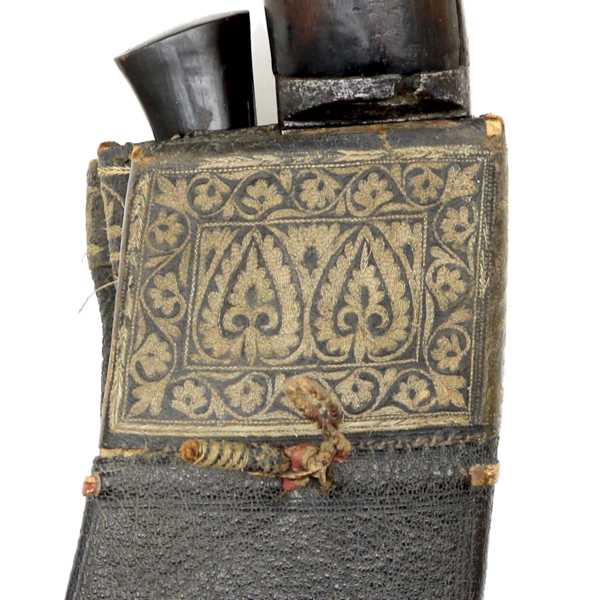
Nepalese quill embroidery
Scabbards of antique Nepalese khora swords and khukurī knives sometimes exhibit a peculiar type of embroidery that uses quill strips from peacock feathers.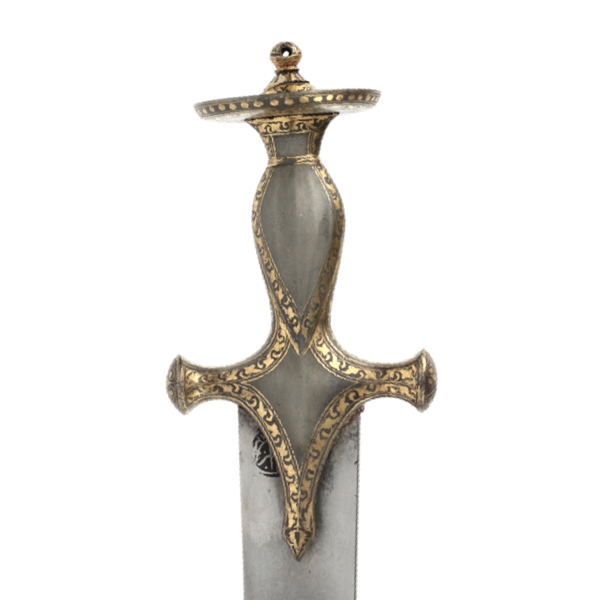
Korbandi
Hindi word for a type of decoration with a plain center and gold or silver decorated borders.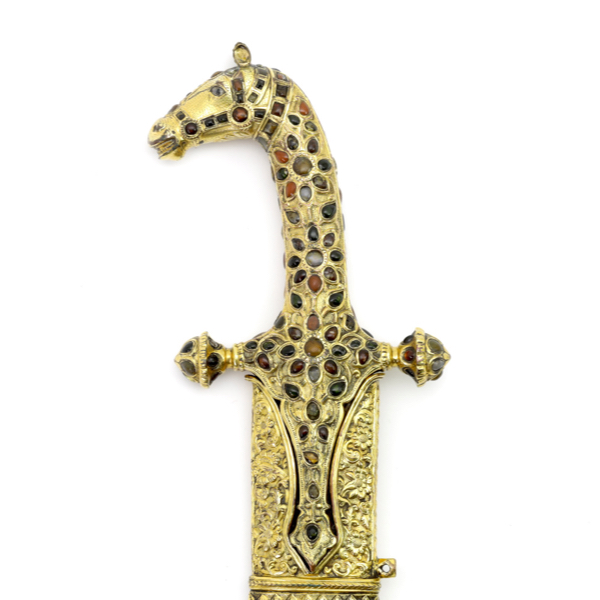
Fine Kutch horse head shamshir
The style typical of Kutch, the execution far above what is normally seen on work from that area.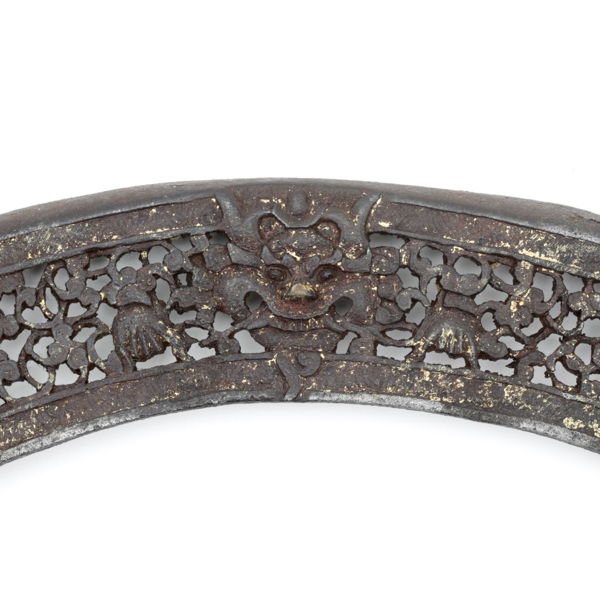
Pierced iron saddle bows
This kind of fine work is typical for Tibetan work of the 15th-16th centuries.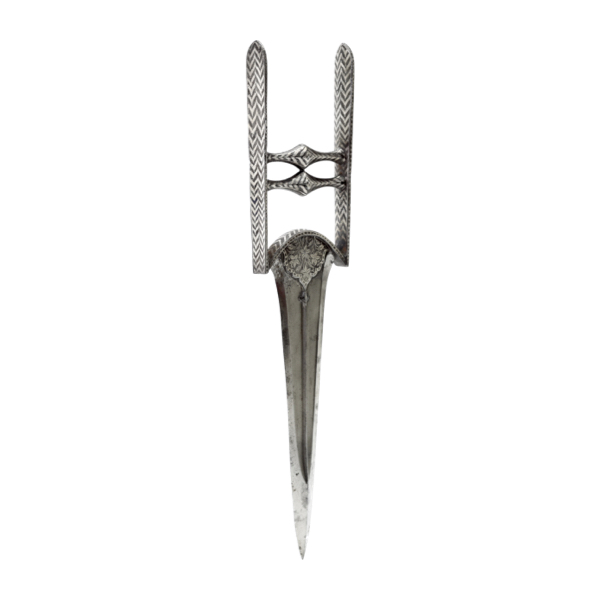
Silver chevron katar
All the designs being true inlay, with almost no losses.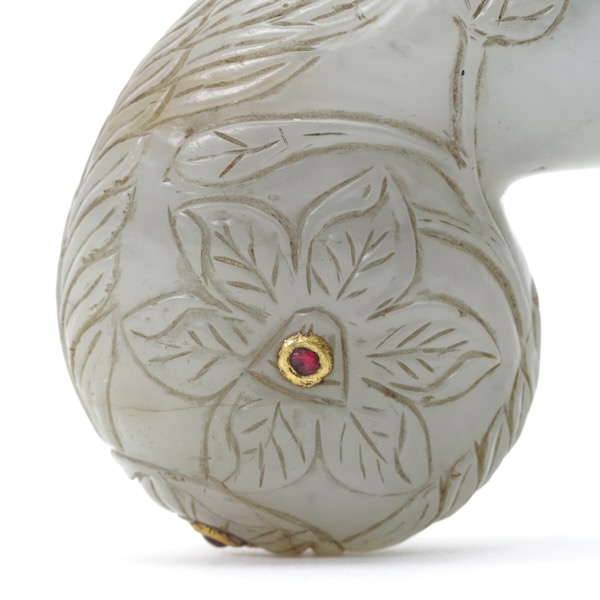
kundan (कुंदन)
It literally means "gold" but is also a technique for setting gems into brittle surfaces.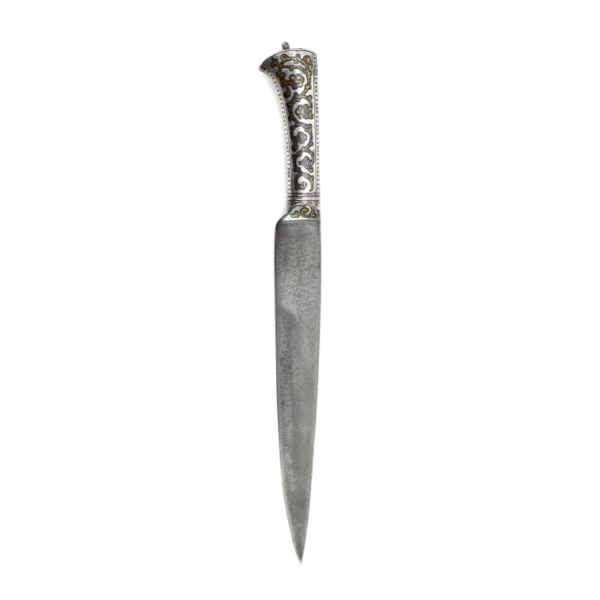
Ganga Jamni decorated kard
Ganga - Jamni refers to the rivers of the Ganges and Jamna. It was used to describe metalwork done in contrasting colors, usually gold and silver, in inlay or overlay work.
Sialkot (production center)
A town well-known for its arms production, and gold overlay work (koftgari)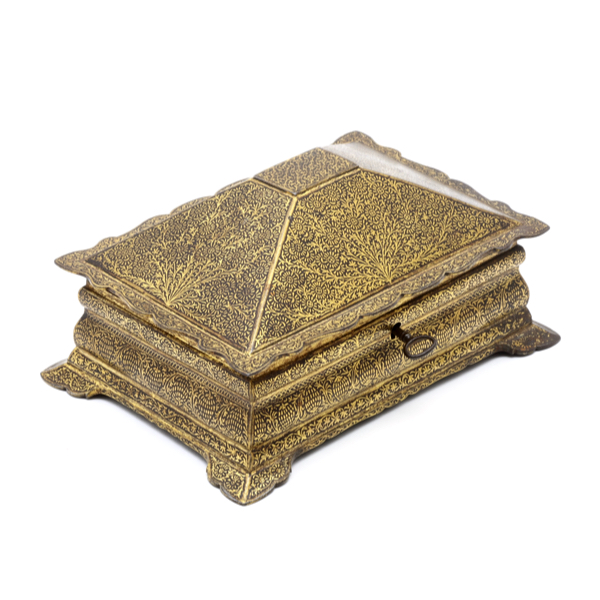
Punjabi koftgari lockbox
Iron lockbox with key, decorated with the gold koftgari normally seen on arms.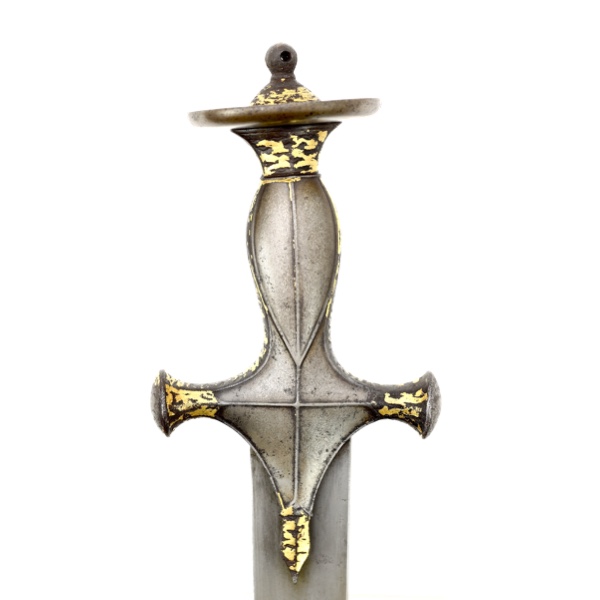
Talwar with wootz hilt and blade
With Persian style blade, showing Indian workmanship.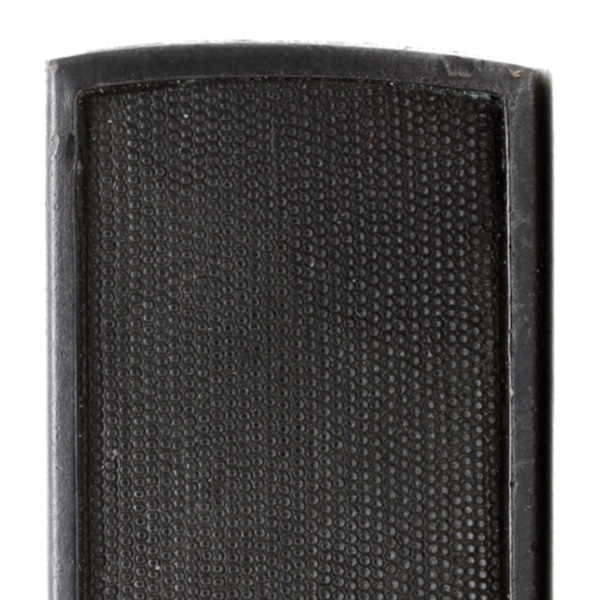
Nanako (魚子/斜子)
The Japanese name for punched, dotted surface finishes on metal.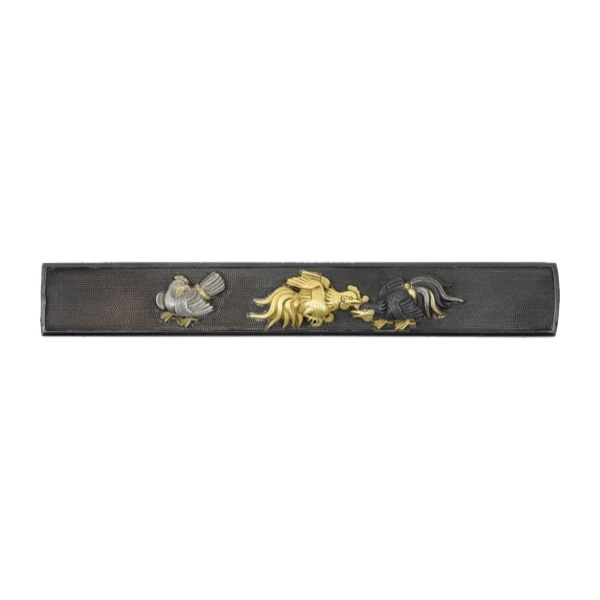
Rooster fight kozuka
Executed in gold and silver on a shakudō nanako base, with golden back.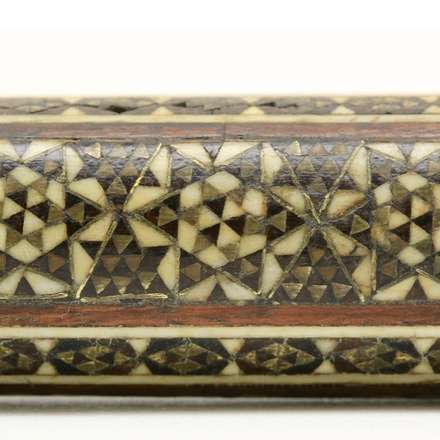
Khātam
Persian word for a type of marquetry work.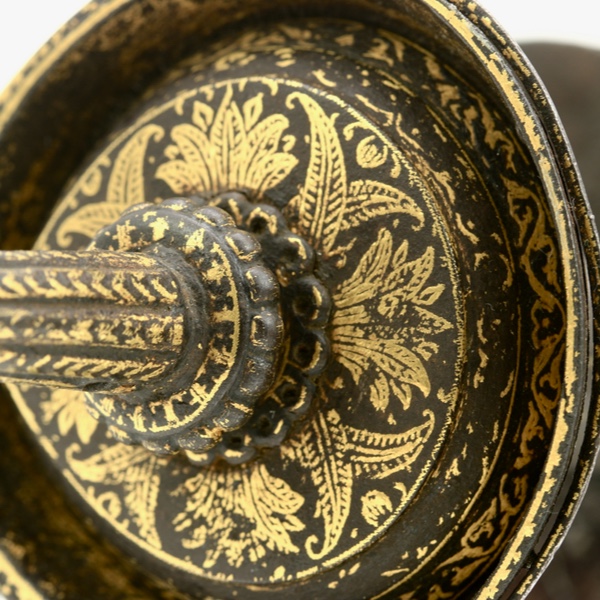
Damascening
Inlaying or overlaying of gold or silver on another metal.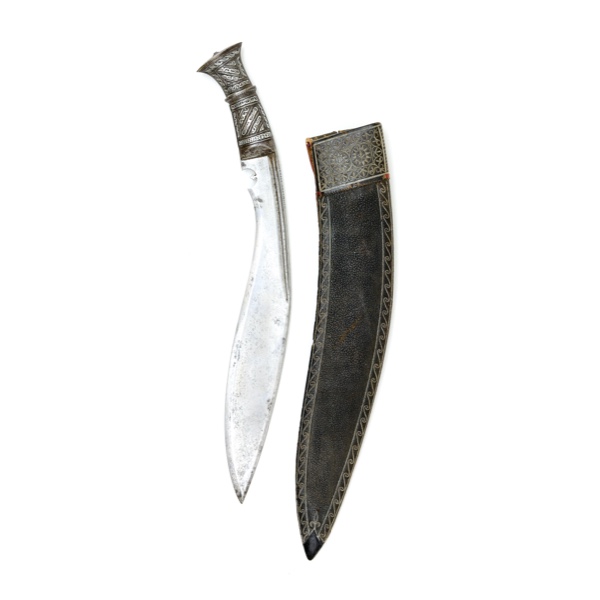
A fine 19th century khukurī
With iron, silver overlaid hilt. Its associated scabbard features fine quillwork.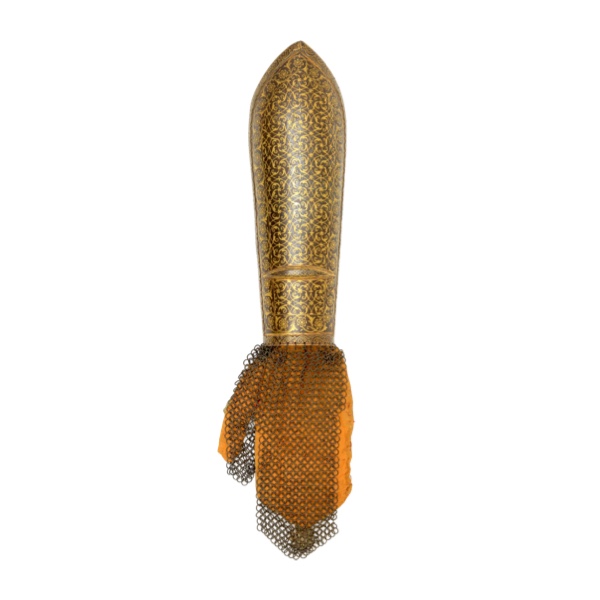
A Punjabi arm guard
Made of steel, decorated with fine gold overlay in a pattern of swastikas.
Koftgarī (کوفت گری)
Persian word for inlay or overlay of precious metal on iron or steel.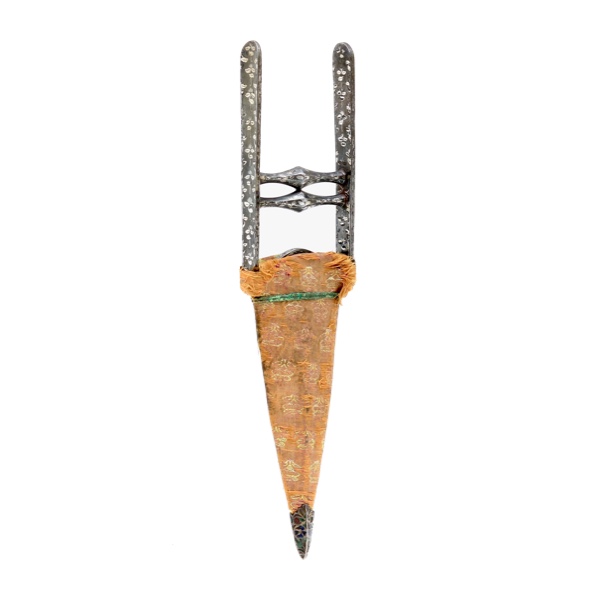
A katar with true inlay decoration
Late 17th century. With wootz blade and enamel chape.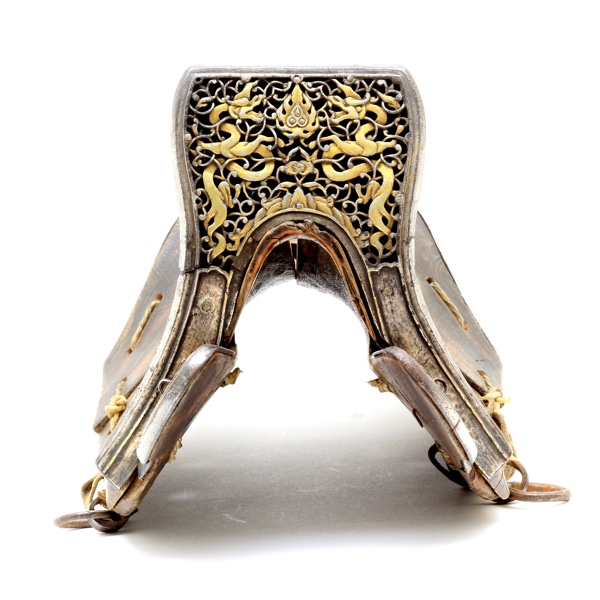
Pierced iron saddle
Executed in the Tibetan style, exhibiting dragons in foliage chasing flaming jewels.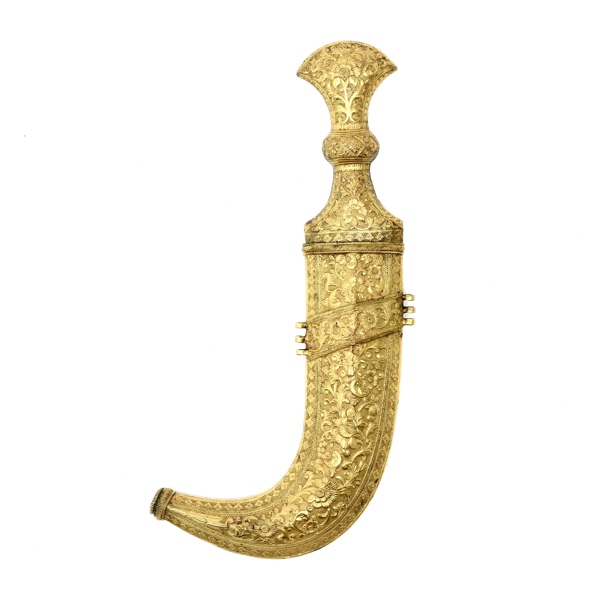
A gilt Indian jambiya
With gilt-copper hilt and scabbard done in beautiful Kutch style repousse work.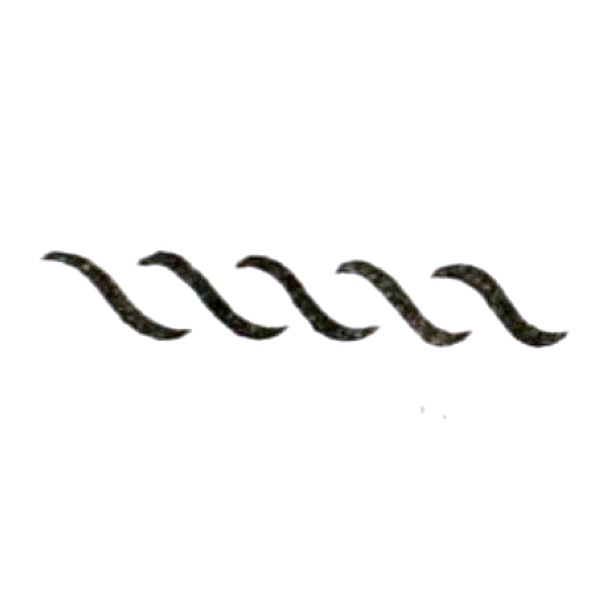
Mata-djoh
Long Way Dayak word for a type of decoration consisting of S-shaped ornaments.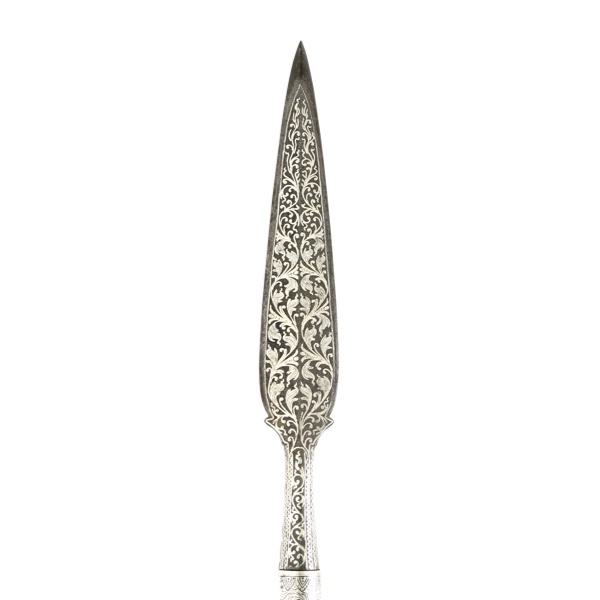
A rare Burmese spear
A fine example with silver overlaid spearhead and silver ferrule with niello inlay.
Sã̄gle buṭṭā (साँगले बुट्टा)
Nepali word that means "ornamentation in chains".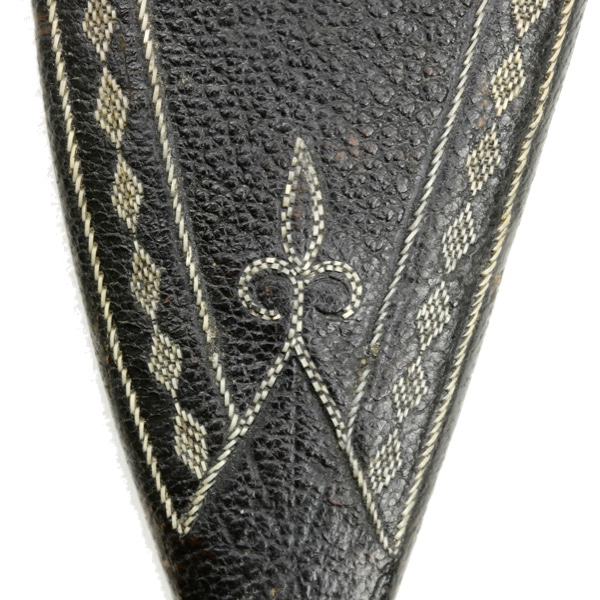
Mākhe buṭṭā (माखे बुट्टा)
Nepali word for a kind of ornamentation consisting of lines of small dots.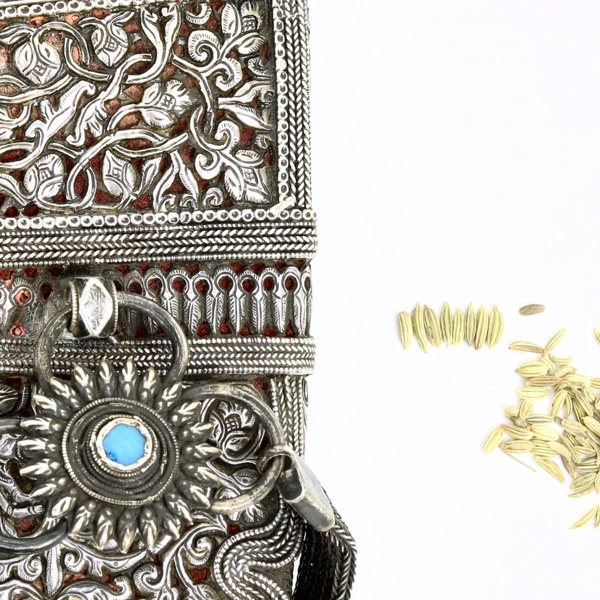
Jire buṭṭā (जिरे बुट्टा)
Nepali word for fluted ornamentation, "like cumin seed".
Belahari (बेलहरि)
Nepali word for scrollwork embroidery.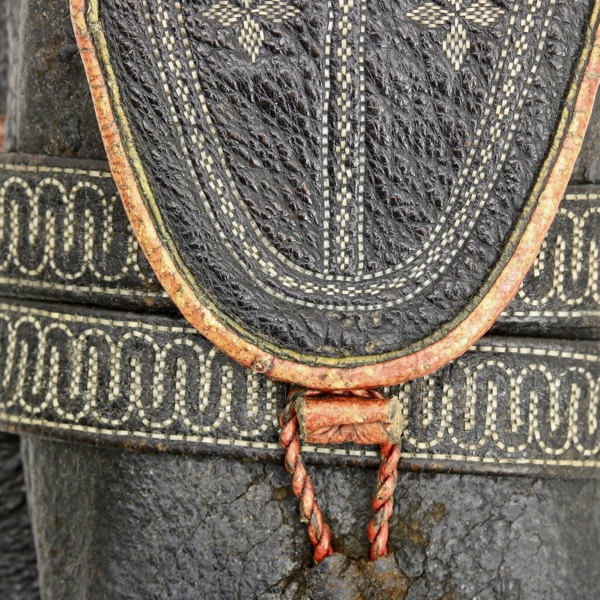
Belahari buṭṭā (बेलहरि बुट्टा)
Nepali word for scrollwork embroidery on a khukuri scabbard.
Bel-buṭṭā (बेल्-बुट्टा)
Nepali word for scrollwork embroidery on a khukuri scabbard.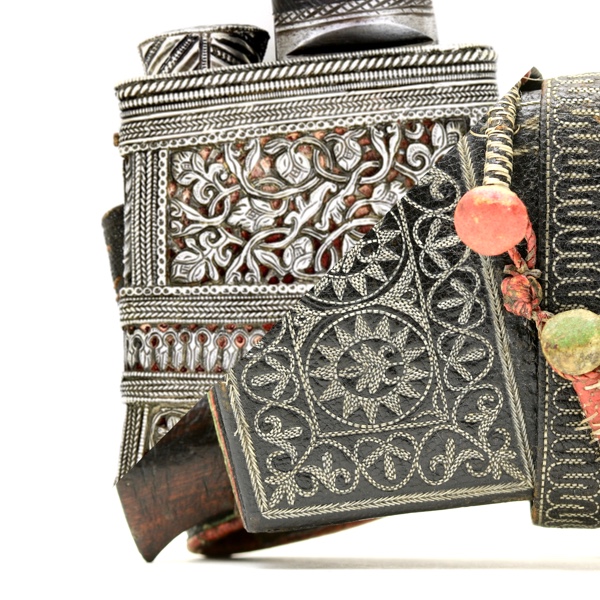
Buṭṭā (बुट्टा)
Nepali word for embroidery; braid; filigree work.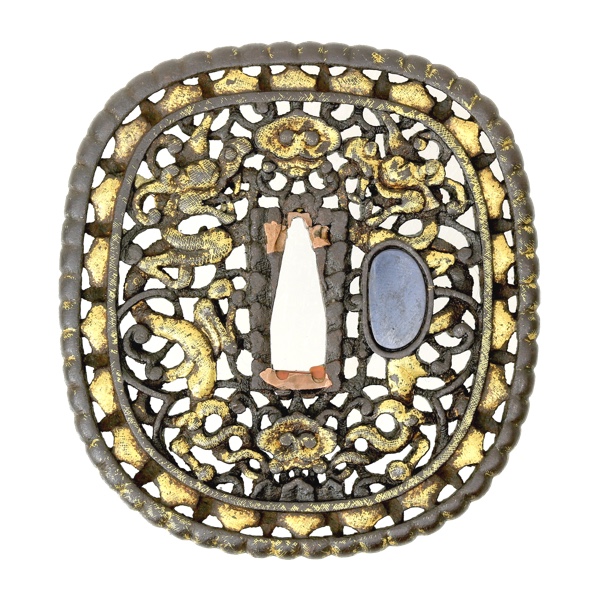
Chinese lòukōng sword guard
The archetypical Chinese sword guard that gave rise to the Japanese genre of "nanban tsuba".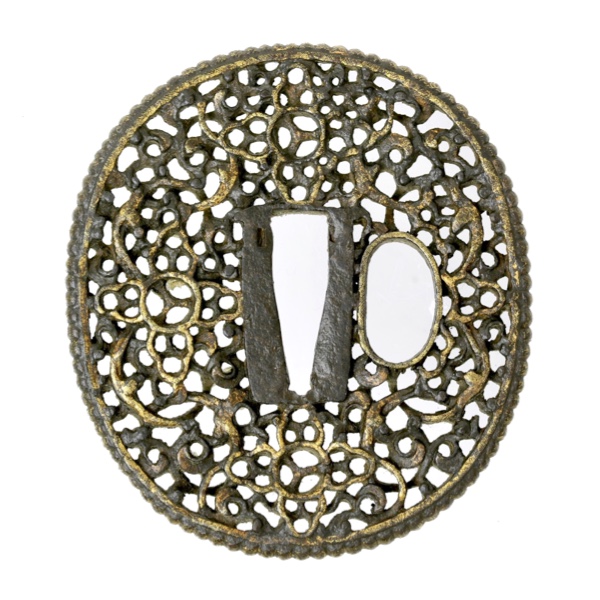
Qing openwork saber guard
A very rare Chinese saber guard dating from the height of the Qing dynasty.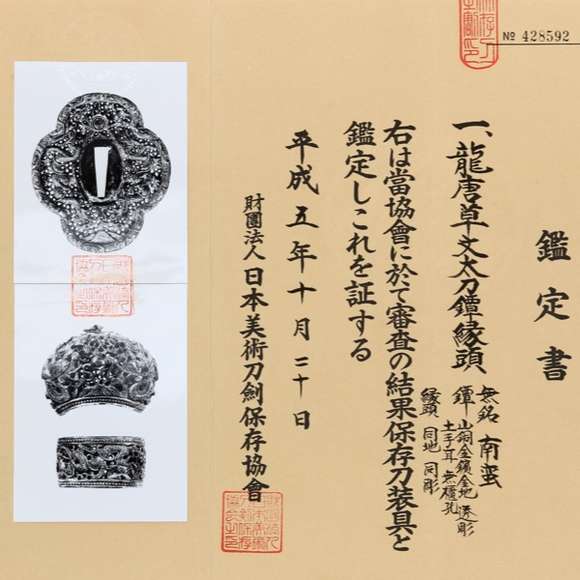
Chinese sword guards in Japan
The Chinese saber guard is called dāo hūshǒu (刀護手), or hùshǒu pán (護手盤) in Chinese. This literally translates to "saber handguard" or "disc handguard". At some point, the Japanese got quite a taste for them. Over the years a number of them have turned up from Japanese sources that exhibit alterations that indicate they were used by Japanese on their swords.
Sadeli
Indian term of a type of marquetry that is done with the cross-sections of composite rods of different materials.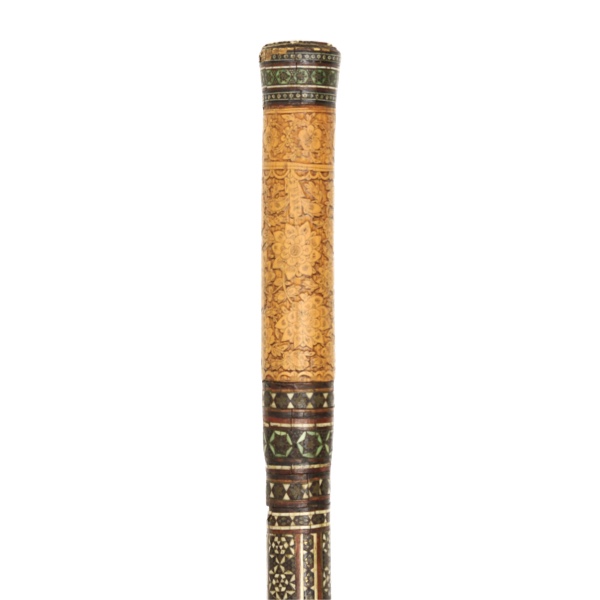
Sadeli walking cane
Covered almost entirely in very fine "sadeli" marquetry that is associated primarily with Gujarat.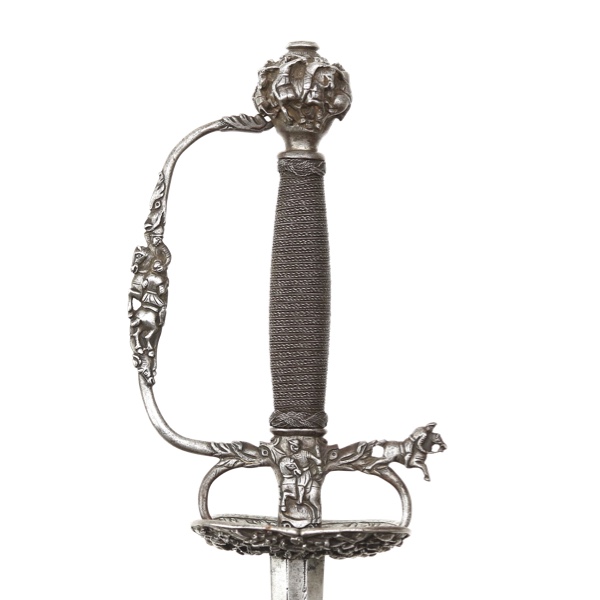
Dutch chiseled iron smallsword
Part of a group of rare late 17th century examples, representing the finest of its kind.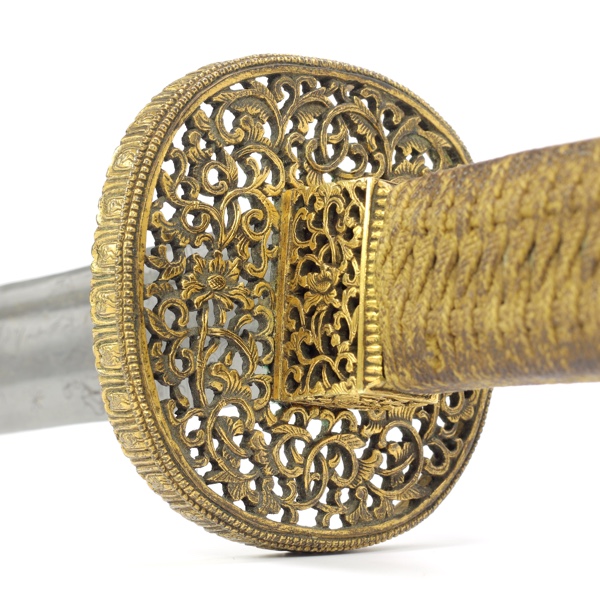
Lòukōng (鏤空)
Chinese term for openwork.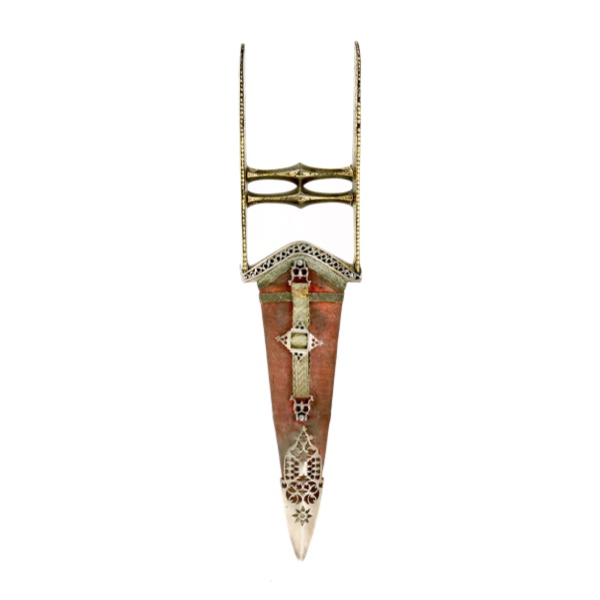
A katar from Sindh
With markings suggesting it was a wedding gift, presented in 1832.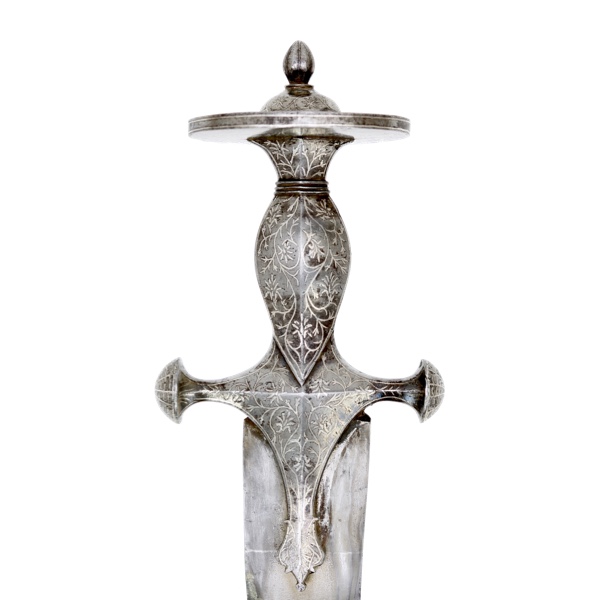
Large wootz talwar
The hilt inlaid with silver, once blued for added contrast.
Ganga-Jamni
Name for Indian work in two metals of contrasting colors, usually silver and gold.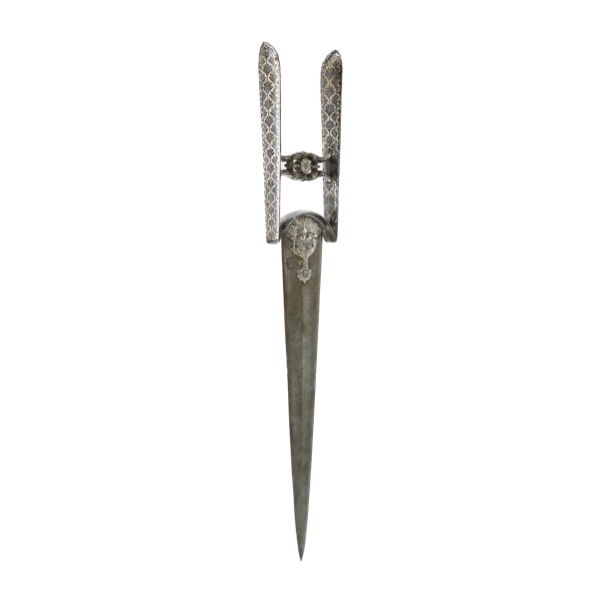
Silver inlaid Deccan katar
An impressive example with true inlays in silver in the hilt.
Tah-i-nishan (तह-ी-निशान)
Indo-Persian term for true inlaying with gold or silver.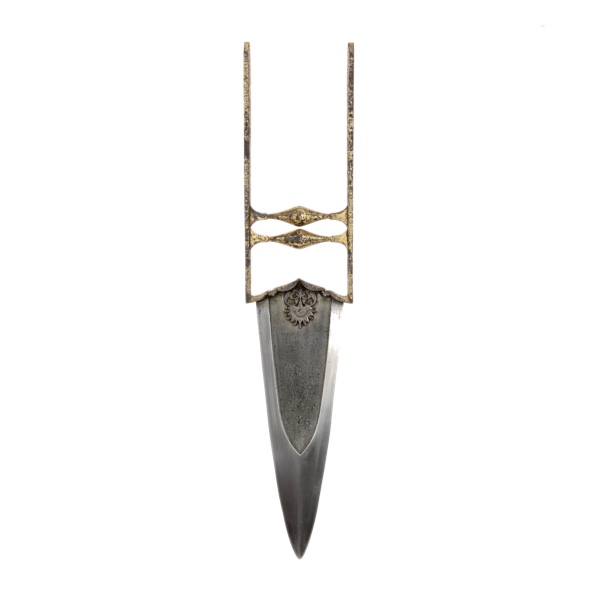
18th century northern katar
With high-contrast wootz blade and fine damascening in two tones of gold.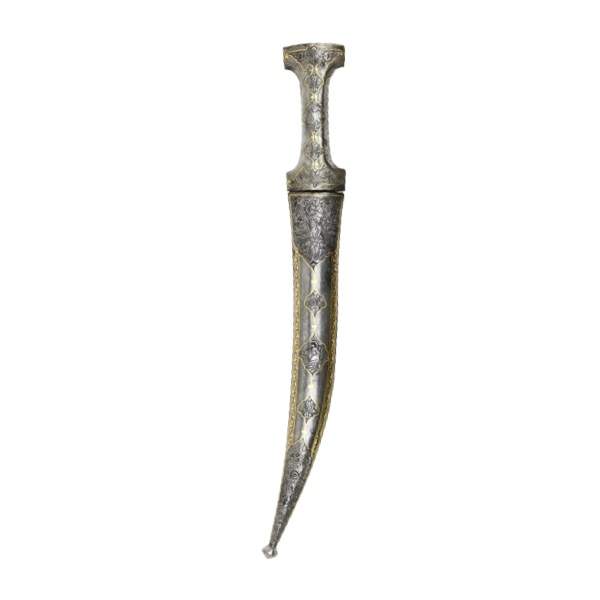
Persian all steel mounted khanjar
With finely chiseled steel hilt and scabbard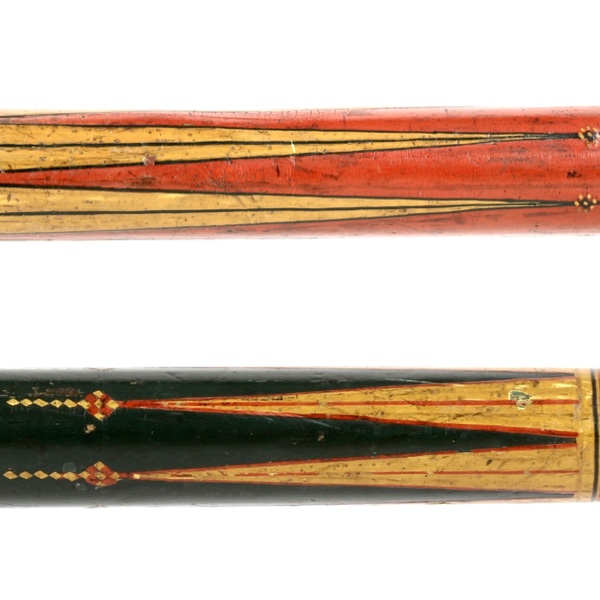
Niyapoṭen vēda
A type of Sinhalese lacquer work that was directly applied without using brushes. Also known as Mātale work.